Compared to passerines, the calls of seabirds consist of relatively simple, nonvariable elements. Hydrobates leucorhous (Leach’s Storm Petrel), however, is an exception to that trend and possesses complicated, variable calls dubbed “chatter” and “purr” calls. Previous research has shown that chatter calls differ in frequency by sex. Using a study population of Leach’s storm-petrels on Kent Island, New Brunswick I examined 1: whether the previously documented sex difference is caused by size dimorphism, and (2) whether calling varies contextually with reproductive phase. I hypothesize that chatter frequency may differ with sex independent of body size. The difference in frequency seems large enough that I believe the possible small size dimorphism will likely not correspond. In addition, I hypothesize that calling will increase as the number of days incubating increases. Finally, after hatch, I hypothesize that the average number of purr calls will increase compared to during incubation as the purr call has been previously suggested to be affectionate. To those ends, I staked 2-channelled Song Meter Mini microphones at petrel burrows with one mic facing into the burrow, and one away allowing me to discern between calls inside and outside burrows. I took recordings in two different time-scales: single night recordings relying on daily identification of individuals via capture, and multi-night recordings spanning hatch of burrows with RFID recorders and tagged birds. I found that the sexual dimorphism in chatter call frequency was likely not attributable to size. I also found that as incubation proceeds, the number of chatter calls per evening increases, and that the ratio of purr calls to chatter calls greatly increases after hatch.
Recent Summer Fellows
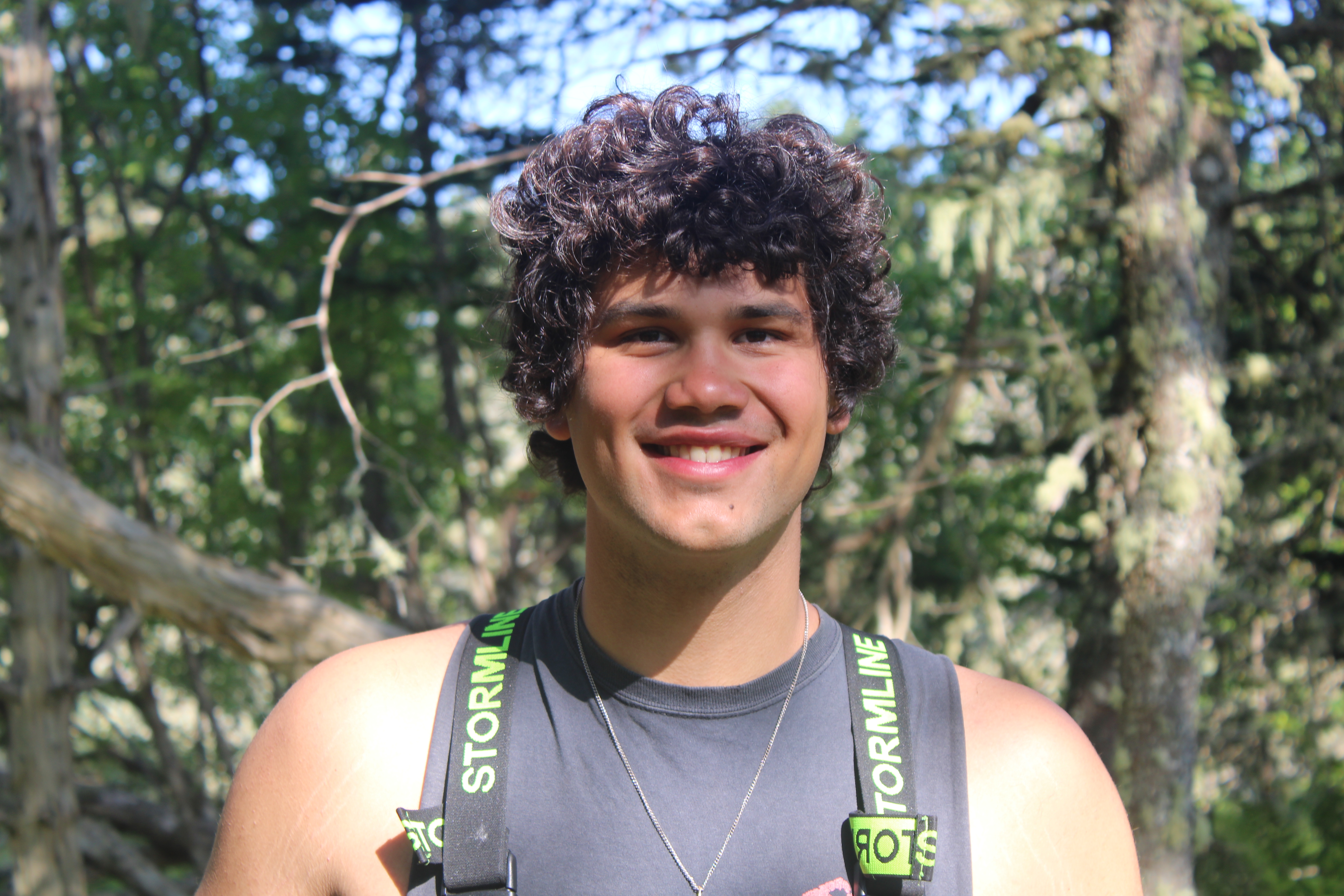
Cameron Edgar
Class of: 2026
Fellowship Focus: Bioacoustics of Leach's Storm Petrels
Major(s): Biology
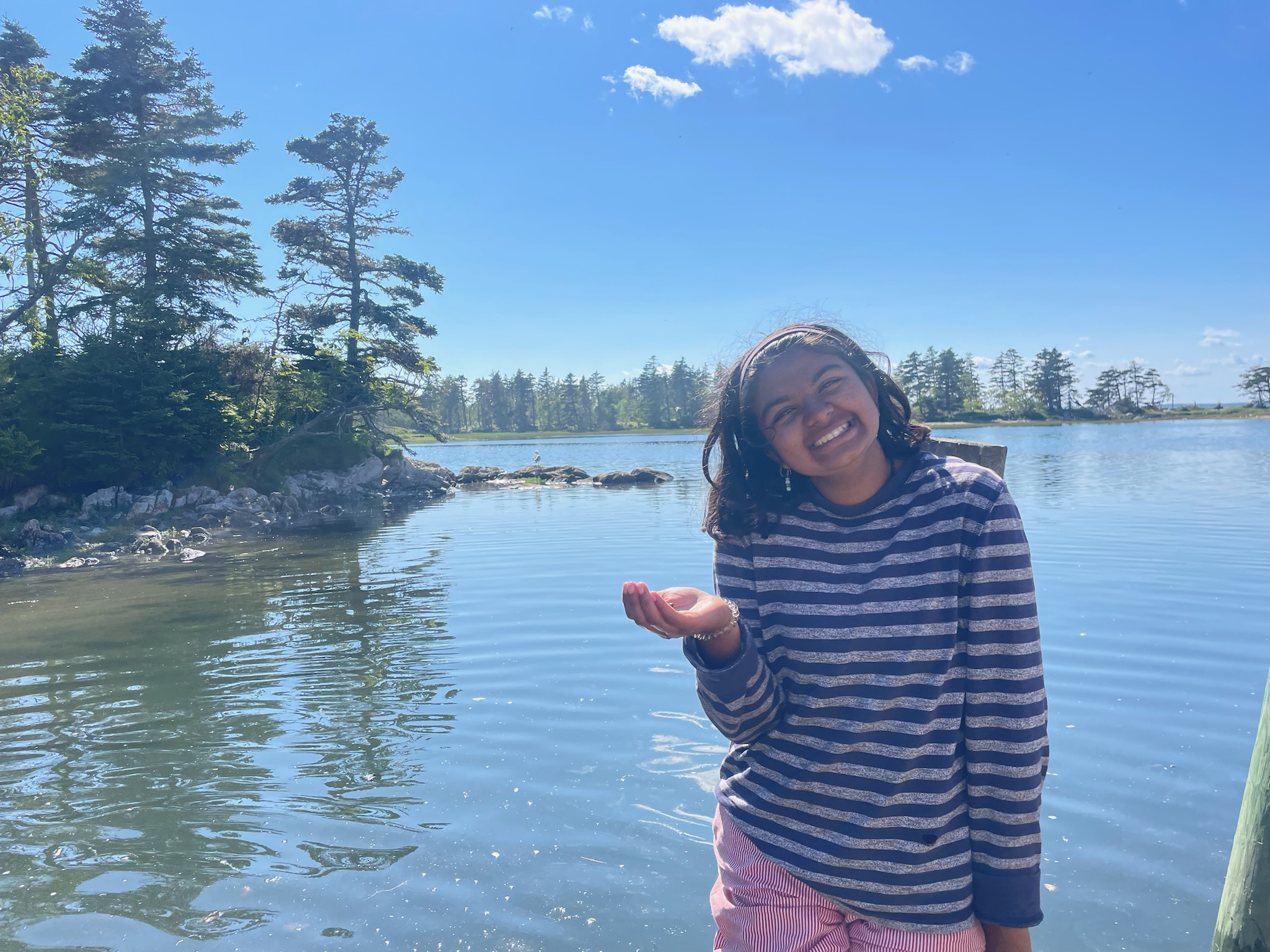
Caitlin Panicker
Class of: 2026
Fellowship Focus: Leach's Storm Petrels
Major(s): Biology and Gender, Sexuality, & Women's Studies
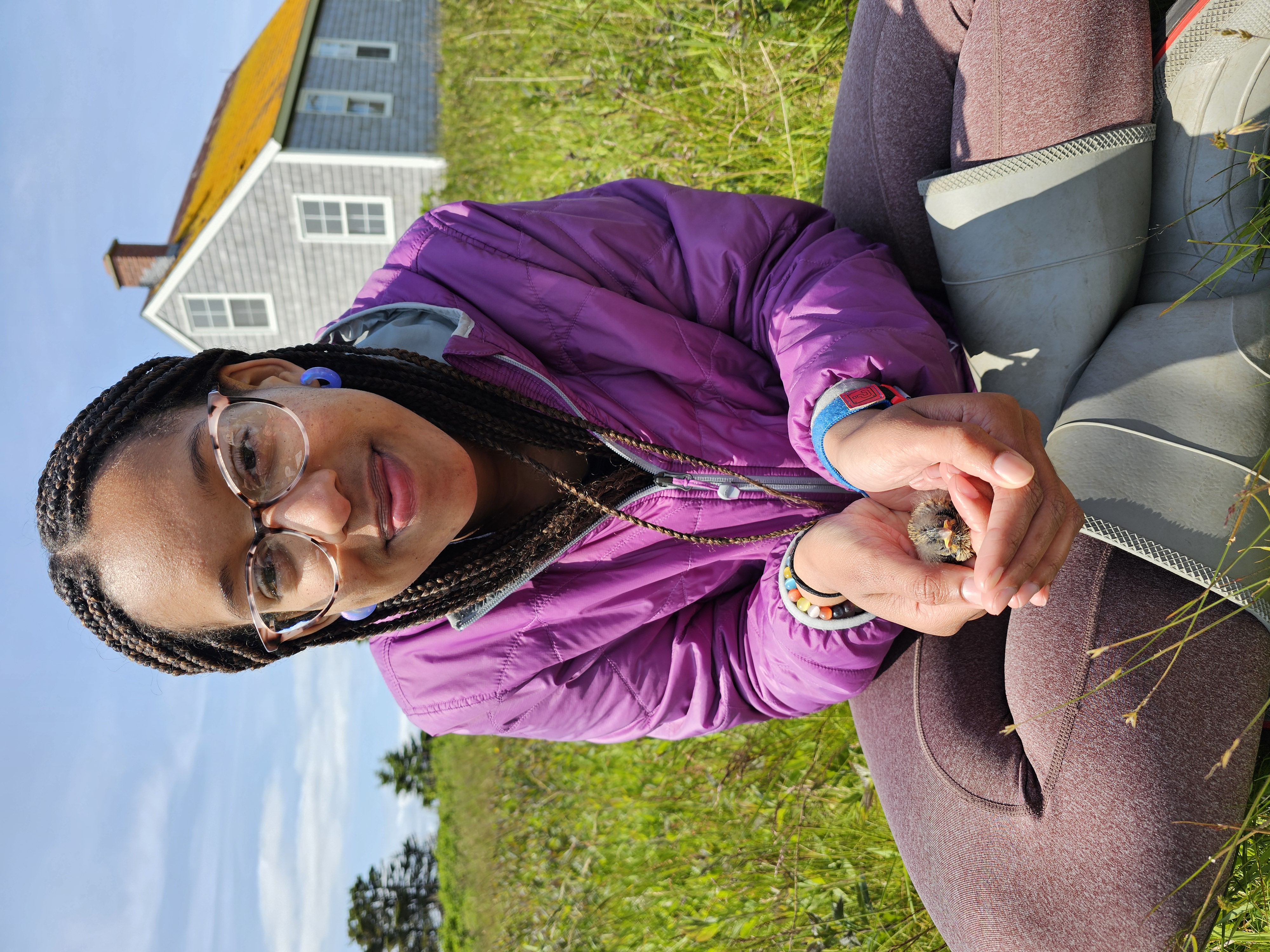
Kanene Nwokeji
Class of: 2026
Fellowship Focus: Nonfiction Writing
Major(s): Biology / English

Eli Bundy
Class of: 2026
Fellowship Focus: Study of Lay date on hatch success in Leach's Storm Petrels
Major(s): EOS / Environmental Studies
Leach’s Storm-Petrels are small, well-traveled seabirds who lay their eggs in burrows on islands in the North Atlantic, and like other seabirds, they have been negatively impacted by reduced food availability and habitat destruction in recent years. Since they migrate long distances before returning to their burrows, we expected that their phenology is likely impacted by a variety of factors across the Atlantic, including weather patterns, food availability, and large-scale climatic changes. Because of their broad range across the Atlantic, we investigated the potential relationship between Leach’s Storm-Petrel lay date and the Annual Mean Global Temperature Anomaly and Atlantic Multi-Decadal Oscillation, both global climate variables quantifying changing sea surface and land temperatures. Researchers on Kent Island have been monitoring burrows via grubbing (reaching into burrows to feel for eggs, adults, and chicks) since 1955, so our analyses of lay date encompass human-induced climate change and in the past seven decades. We found that lay dates on Kent Island, New Brunswick have been trending earlier during that period, and that variance is shrinking, though individuals who successfully fledged a chick with their pair the previous year are more likely to lay early than those who switched partners or failed to raise a chick. Our findings also indicate that both AGMT and AMO influence lay date trends, although many other factors also impact individual and population phenology. With seabirds, including Leach’s Storm-Petrels, in decline, better understanding of the life histories of these birds is critical in working to comprehend their adaptations to our changing climate.
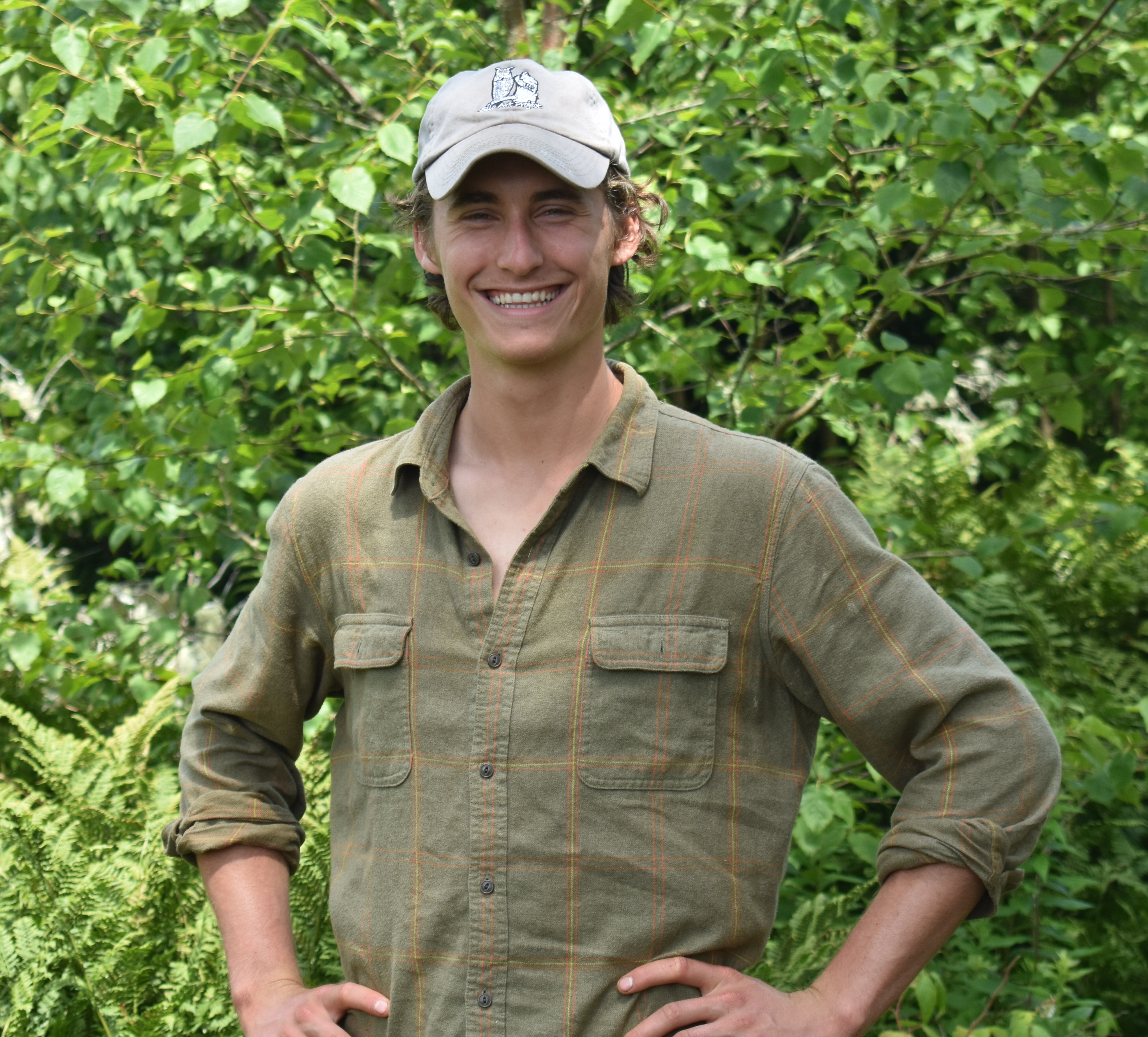
Luke Robinson
Class of: 2026
Fellowship Focus: Leach's Storm Petrels
Major(s): Biology
Luke spent the summer studying Leach’s storm-petrels at the Bowdoin Scientific Station on Kent Island, maintaining a long-term demography dataset. The independent component of his research was concerned with Leach’s storm-petrel burrow architecture. Although they can dig new burrows, each year on Kent Island, Leach’s storm-petrels choose from a pool of existing burrows. Luke was interested in understanding what factors may influence burrow architecture within the study-site over time. He sought to answer the following questions: (1) do Leach’s storm-petrels further excavate existing burrows? If so, to what extent? (2) what factors restrict the size of a burrow? (3) does research disturbance impact burrow architecture?
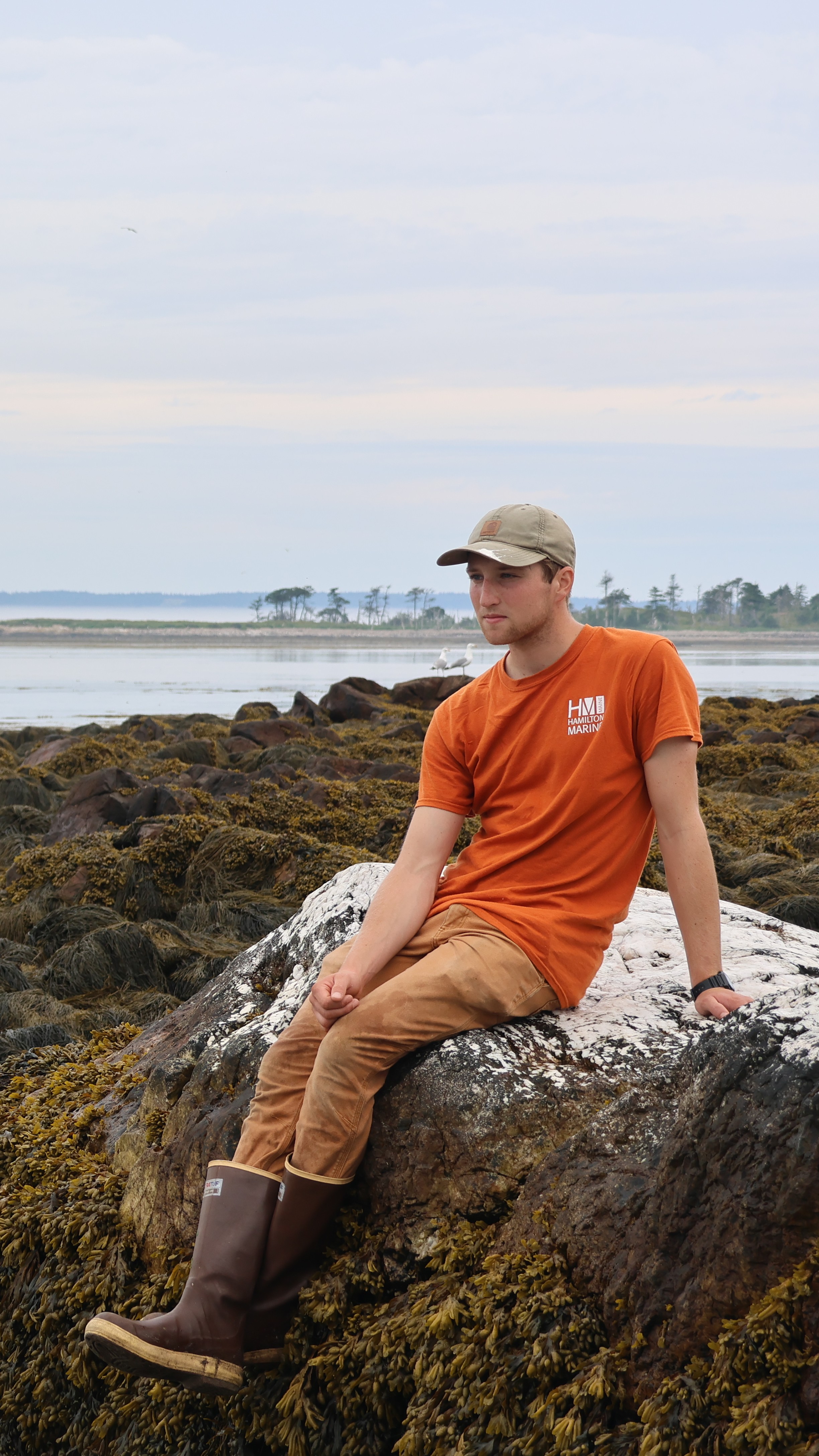
Henry Penfold
Class of: 2026
Fellowship Focus: Optimum Foraging Behavior Leach's Storm Petrels
Major(s): Biology
Leach’s storm petrels (Hydrobates leucorhous) are small procellariiform seabirds which lay a single-egg clutch and exhibit obligate biparental care during incubation and chick-brooding periods (Mauck et al., 2022). During these periods, adult storm petrels take turns embarking on multi-day foraging trips with average cumulative distances of over 1000 km (Hedd et al., 2018). During the summer of 2025, I sought to characterize the foraging flights of Leach’s storm petrels nesting on Kent Island, NB. Using a combination of GPS tracking, radio frequency identification, and newly-developed burrow scale monitoring technology, I examined the foraging flights and yields of 17 individuals during the incubation period. I analyzed the foraging yields of these individuals in relation to a variety of variables including flight distance, duration, target foraging area, individual sex, and exit mass. Individuals that embarked on longer foraging trips returned with smaller foraging yields, while individuals that exited their burrows at lower masses returned with larger foraging yields. No significant differences were found between the yields of individuals foraging in the Gulf of Maine as compared to individuals foraging in pelagic areas, or between the yields of male and female individuals. Future work should focus on tracking individuals across multiple foraging flights, defining foraging areas more precisely, and characterizing foraging behavior outside of the incubation period.
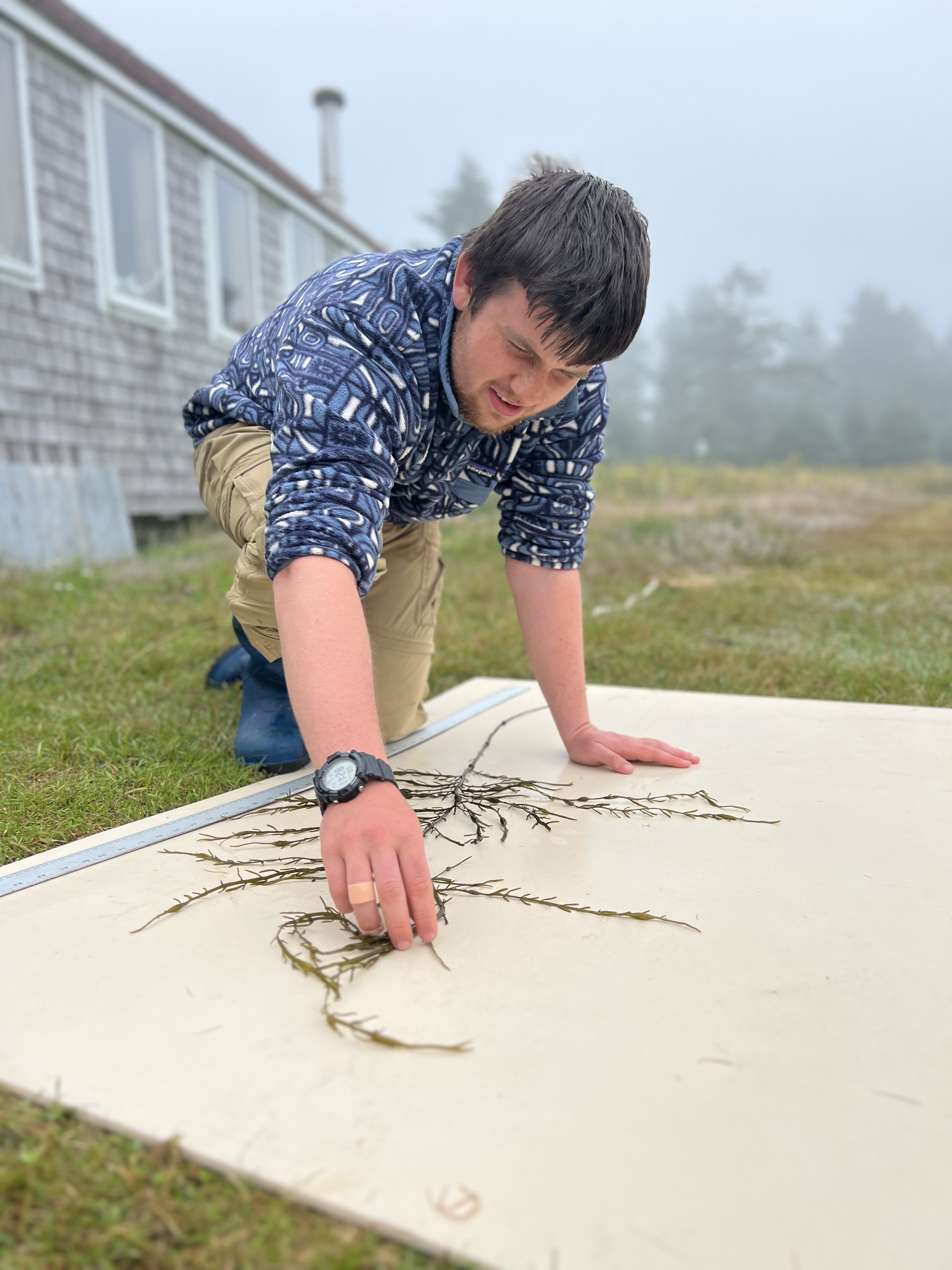
Graham Lucas
Class of: 2026
Fellowship Focus: Rockweed Branching Patterns
Major(s): Biology and Mathematics
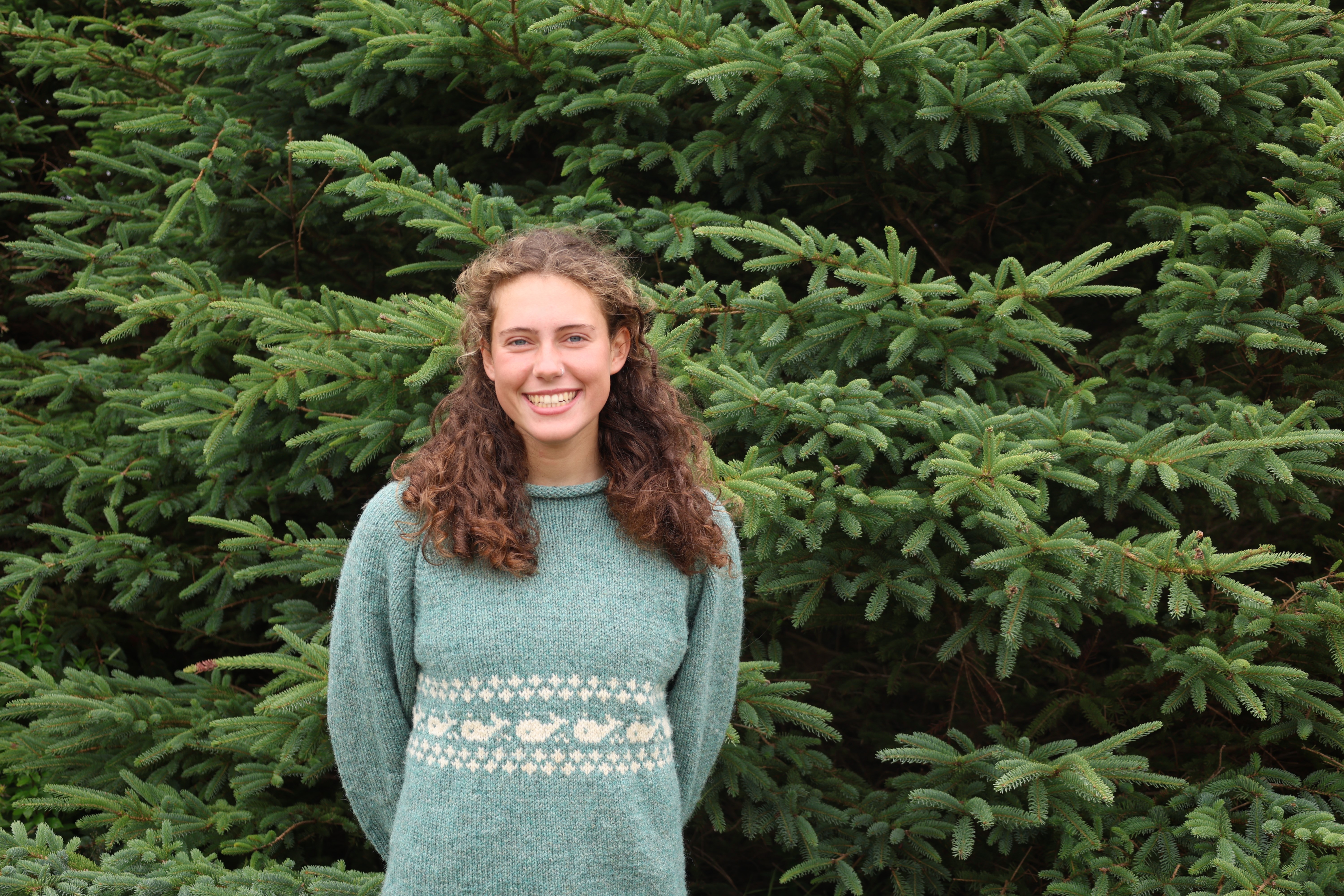
Tess Mooney
Class of: 2026
Fellowship Focus: Fog and Art
Major(s): EOS and English
This summer on Kent Island, Tess was the student artist in residence, and split her time between printmaking and work on a fog capturing project. In the studio, Tess made prints in several different styles, using a combination of previously-learned and new-to-me techniques. Her work includes two short books filled with black and white dry point etchings in PETG plastic. This etching process is most like drawing with a pen on paper, and allowed her to make detailed images of the observed entities. For the first time this summer, Tess experimented with reduction and wood cut printing to bring color and negative space into my images. Additionally, she silk-screen printed a six-piece edition of the herring gull survey crew walking nest-counting transects across the island. Instead of burning images into screens to print, and she chose to hand-cut stencils for each color.
Tess' subject matter aligned with the science project she was simultaneously conducting: capturing fog and measuring the fog pH to transition the historical fog chemistry data set into the modern era. To catch fog 3 screens were built out of three different metal screens and PVC frames. Placing the screens perpendicular to the wind direction, the fog droplets condensed, then dripped down into a collection trough, where they were collected and measured for pH. This project aimed to restart this Kent Island tradition that Bob Cunningham originally began in 1938, adding to the long-term study that spanned the Clean Air Act and implementation of pollution reduction policies.
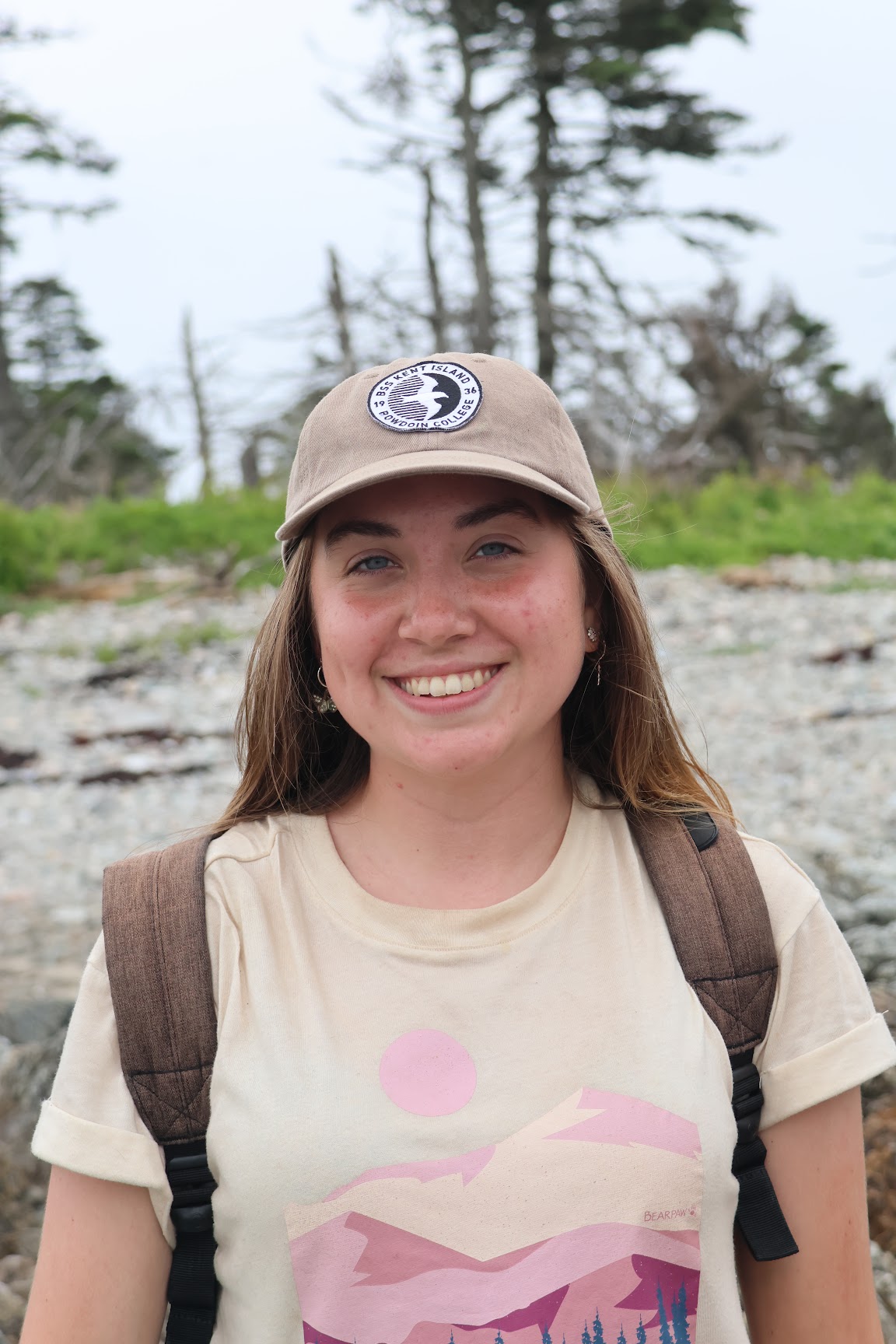
Kayla Kulzy
Class of: 2026
Fellowship Focus: Foraging Decisions in Leach's Storm Petrels
Major(s): Biology/Environmental Studies
In long-lived species, individuals must balance short-term offspring investment with long-term self-prioritization to maximize lifetime reproductive success. Many seabirds are long-lived and rely on ephemeral pelagic resource patches when rearing young, which creates a cost of high-risk foraging trips and may necessitate biparental care. Leach’s storm petrels (Hydrobates leucorhous), are procellariform seabirds with extensive pair bonds and single-egg clutches. Parents return to the burrow at night to regurgitate lipid-rich oil to chicks for the 67-day rearing period. Using weigh bridges in burrow entrances combined with radio frequency identification, we recorded the entry and exit masses of individual parents to determine meal sizes delivered to chicks. We demonstrate that entry weight of the adult and duration since that adult had last fed the chick were important predictors of meal size allocated to a chick. If both parents fed the chick in the same night, the order in which the adult feeds was also correlated to meal size. The combination of this novel technology and unique life history allows us to accurately quantify how much adults chose to invest in their offspring in a given year.

Mina Shenoy
Class of: 2027
Fellowship Focus: Contact and mortality across growth forms in a hemiboreal lichen community
Major(s): Biology
Lichens coexist in dense communities on shared substrates. Although these organisms are slow-growing and stress-tolerant, some studies indicate competitive interactions between lichens of the same growth form (e.g., competition between two crustose lichen species). Here, we studied interactions between abundant fruticose lichens (Usnea) and foliose lichens (Parmelia and Hypogymnia) in epiphytic communities in a spruce forest on Kent Island, New Brunswick, Canada. First, we measured the substrate coverage of lichen genera to describe underlying community composition. Second, we examined each Usnea thallus (N=3701) across ten white spruce (Picea glauca) branches, recording interspecific contacts and thallus characteristics. A binomial mixed effects model revealed that contact with foliose lichens significantly increased the odds of Usnea mortality by 549%. In addition, longer Usnea thallus length decreased the odds of mortality by 93%, while fragment propagation increased the odds of mortality by 1577%. Microscopy indicated tissue damage and photobiont absence associated with foliose contact. The strong correlation between interspecific contact and Usnea mortality suggests lichens dynamically interact even when they differ in growth form. Future work should determine whether foliose contact harms Usnea by chemical/mechanical damage or Usnea chemical defenses discourage contact of living thalli.
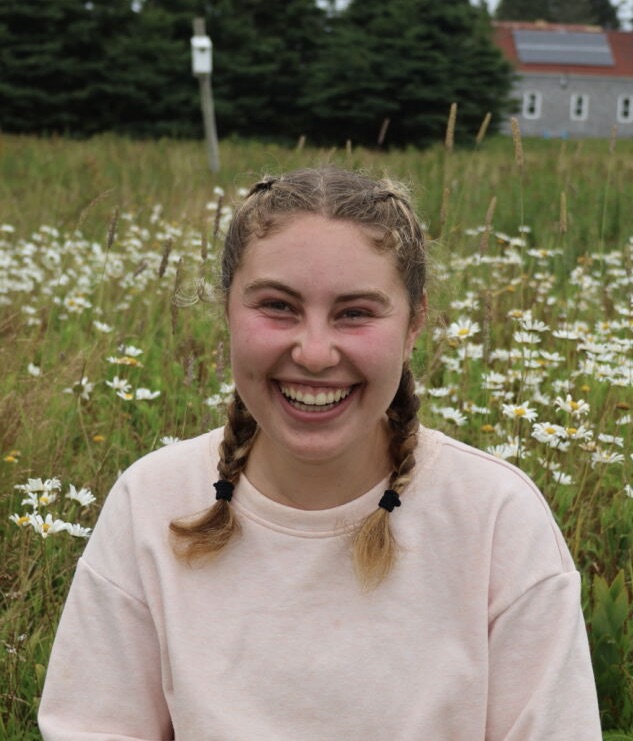
Kendall Brainin
Class of: 2027
Fellowship Focus: Learning and Memory in Bees and Other Pollinators
Major(s): Biology and Chemistry
Kendall spent her summer at the Bowdoin Scientific Station on Kent Island researching pollinators and foraging preferences. Her work consisted of three main parts: contributing to a long-term plant-pollinator network from 2019, 2022, and 2023; taking floral reflectance measurements of the flowering plants on Kent Island; and testing associative learning in wild bees for my independent project.
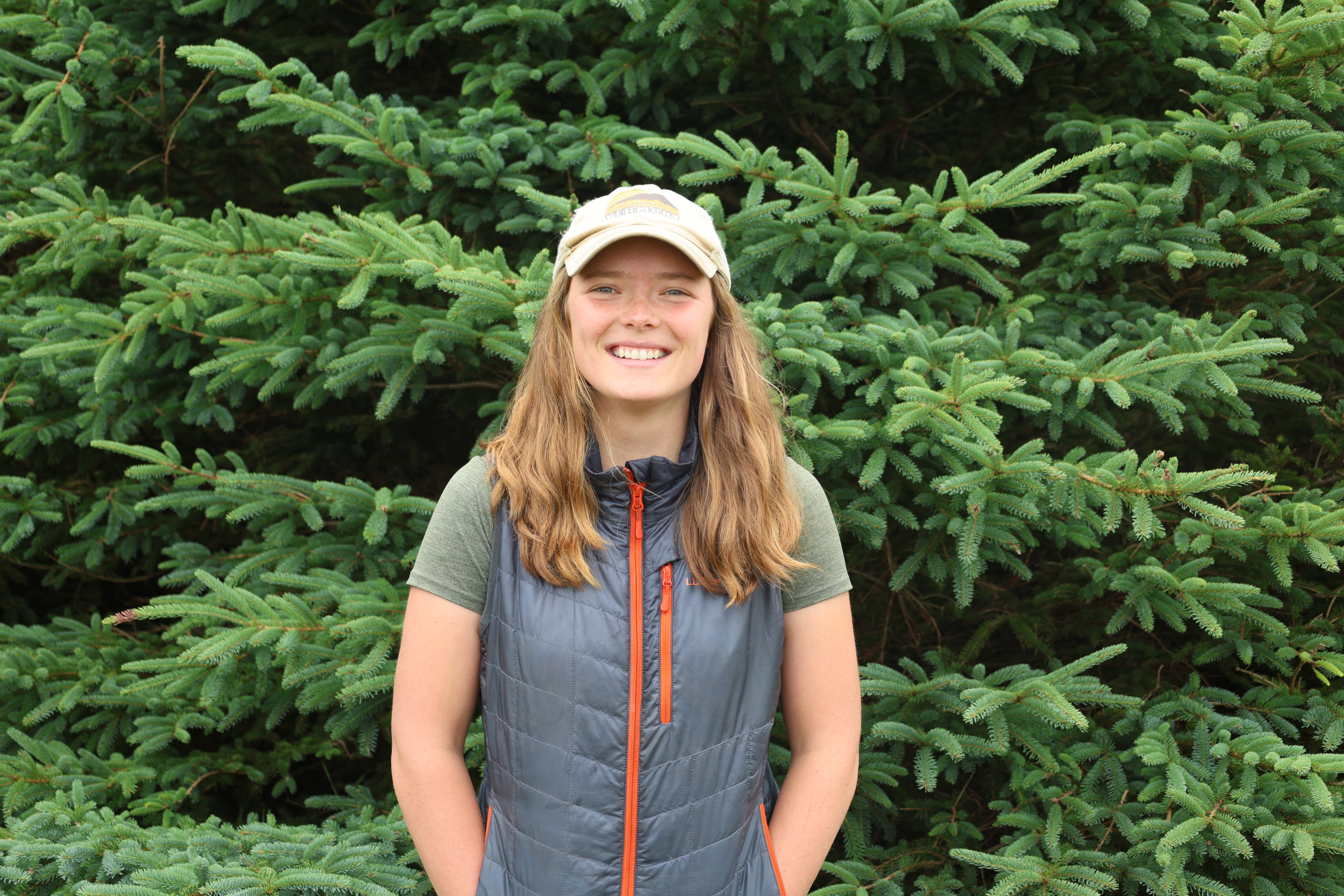
Riley Simon
Class of: 2026
Fellowship Focus: Leach's Storm Petrels
Major(s): Biology
Riley spent her summer at the Bowdoin Scientific station on Kent Island maintaining the long-term Leach’s storm petrel demography data set. She also used the data set to complete her own research on the changes in occupied burrow distribution over time. This research was centered around understanding how population decline, and investigator disturbance affects burrowing choices. Leach’s storm petrels tend to burrow in clusters in developing colonies. This behavior could decrease predation, increase food finding, and increase reproductive success. However, once populations become large enough, the petrels cannot maintain the same clusters without overcrowding. This means that increasing population causes burrow distribution to become more random. The long-term data set tracking petrels in the Shire study site provided the unique opportunity to study this phenomenon in the reverse direction, as a colony is shrinking. The number of occupied burrows in the Shire decreased by more than 50% in the last 20 years. Riley used data from this span of time to answer the following questions: (1) Is the distribution of occupied burrows in the Shire becoming more random or more clustered as the number of nesting pairs decreases? (2) What does this change tell us about effects of population decline and investigator disturbance on colony structure?
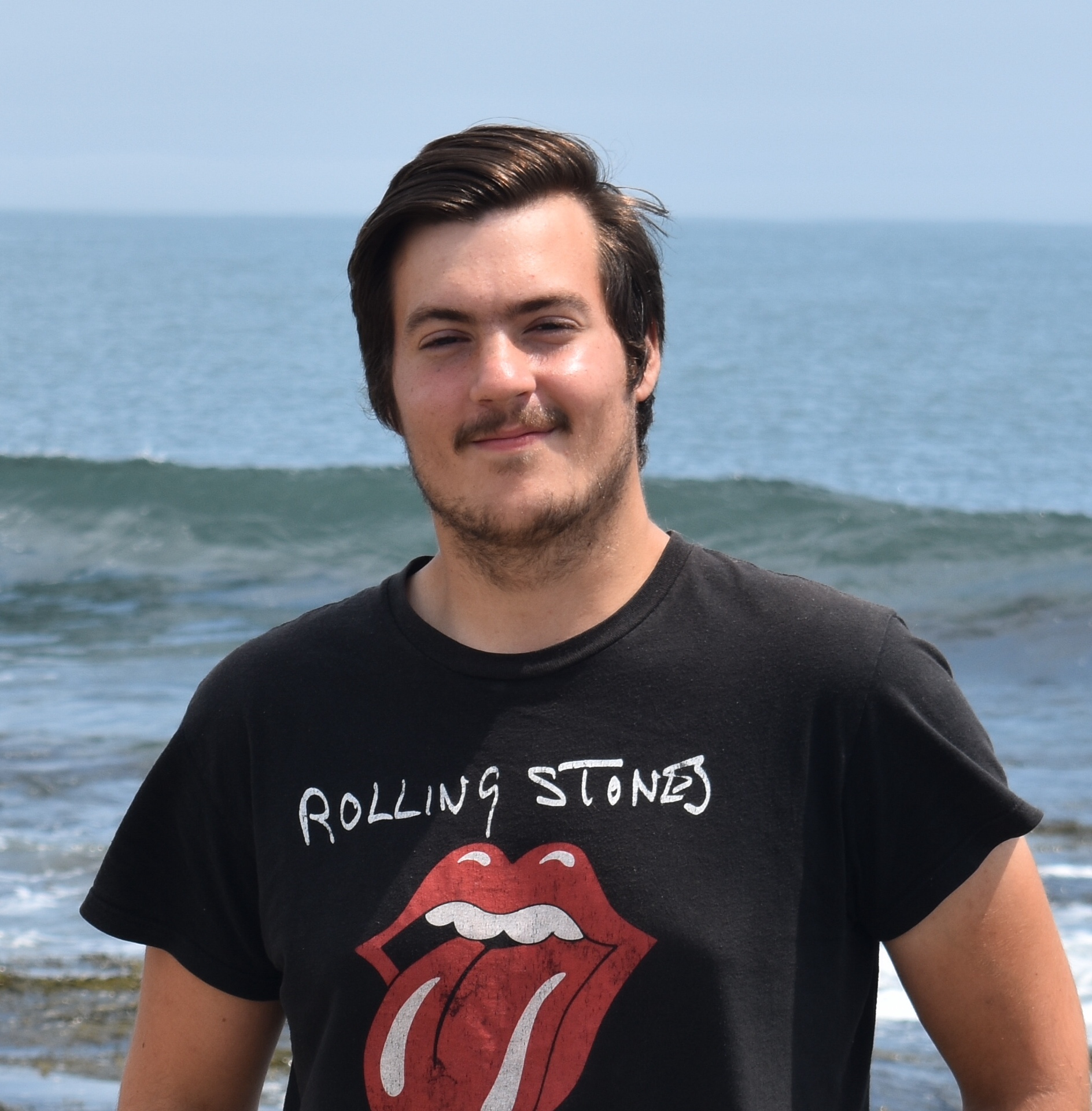
Dylan Berr
Class of: 2026
Fellowship Focus: Nudibranchs
Major(s): Biology and Mathematics
At the Bowdoin Scientific Field Station on Kent Island, Dylan worked as an intertidal student studying nudibranchs. Nudibranchs are inconspicuous yet vibrant, shell-less marine gastropods that frequent the lower intertidal during the late spring and early summer. While physiology can change significantly across taxonomic clades, all nudibranch species possess chemosensory receptors on the tops of their heads called rhinophores. These structures host ganglions that detect secondary metabolites from prey species and other nudibranchs. Dylan first chose to study Coryphella verrucosa, which lives in competitive, low wave-exposed regions of densely packed, R-selected species. Their primary diet consists of various Cnidarians such as polyp stage hydrozoans that settle on rocks and algae from the plankton. Conversely, the second nudibranch he chose to study was Ancula gibbosa, a Bryozoan specialist that inhabits late successional, highly wave exposed, and kelp shaded tidepools in the lower intertidal. By working with these species, Dylan hoped to gain insight into the possible link between environmental pressures and how these organisms navigate their surroundings. This summer, he was interested in comparing the speed and accuracy at which these nudibranchs approached a prey stimulus and if they show clear prey preferences. With the information above, Dylan predicted that C. verrucosa would navigate towards a food stimulus more rapidly and accurately than A. gibbosa but will also show less preference due to the instability of select prey species in its competitive environment.

Ada Potter
Class of: 2026
Fellowship Focus: Drawing, Collage, Print Making
Major(s): Visual Arts / Environmental Studies
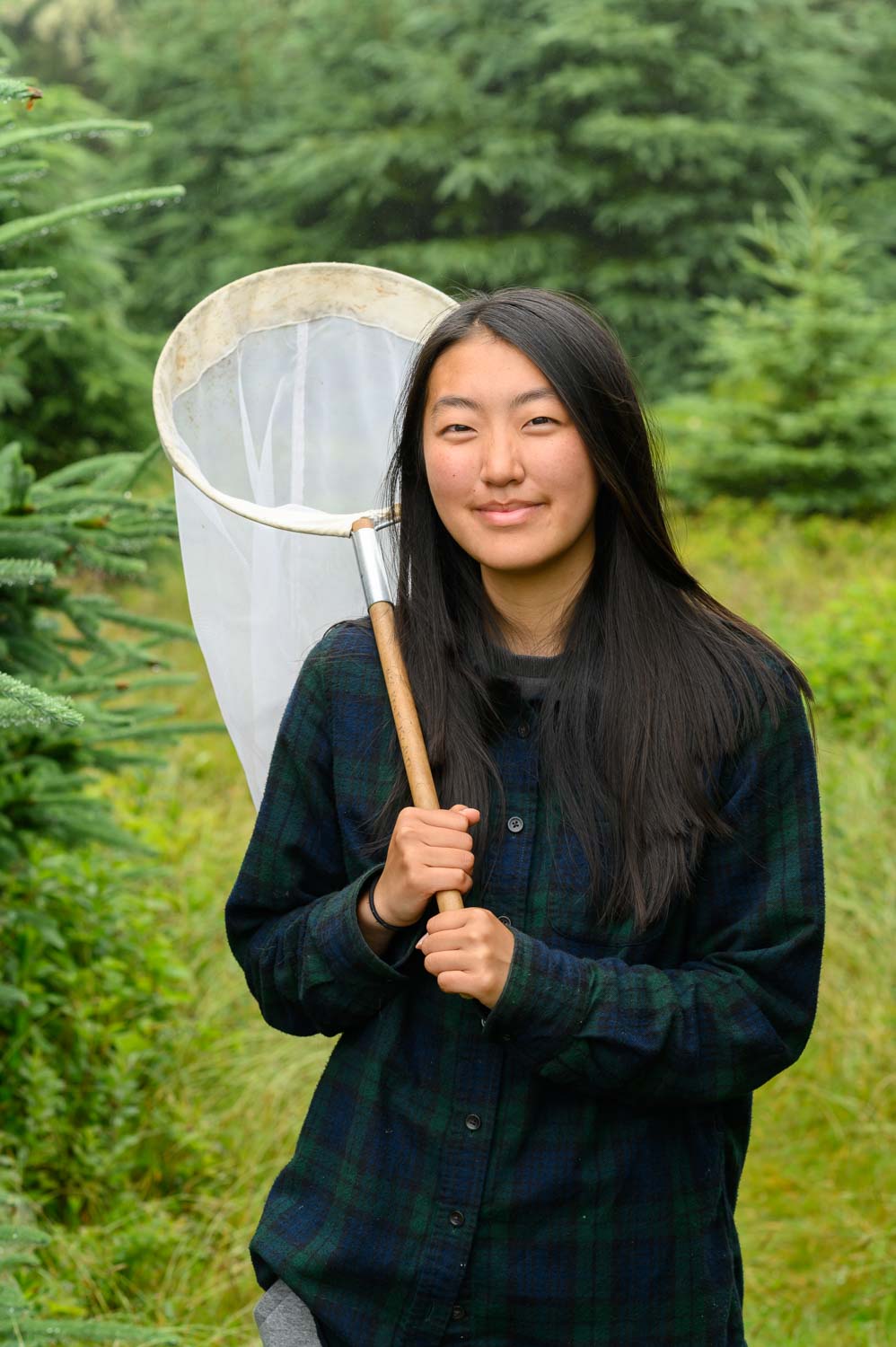
Eva Ahn
Class of: 2026
Fellowship Focus: Pollinators
Major(s): Environmental Studies and Biology
Pollination facilitation is an indirect relationship between co-flowering species where one species benefits the reproduction of another plant species. Flower color is thought to play a role in facilitation, such as greater reproductive success from standing out in color among co-flowering species. I used the Kent Island plant-pollinator network data to measure the closest physical distance and color similarity between Ranunculus acris (tall buttercup) and other flowering species on the island to answer the questions: Do flowers that exist closer together in physical space exist closer together in spectral space? I found no significant relationship between these factors, but I found greater niche overlap between flowers very different in color compared to flowers similar in color, suggesting greater specialization in flowers with similar color displays.
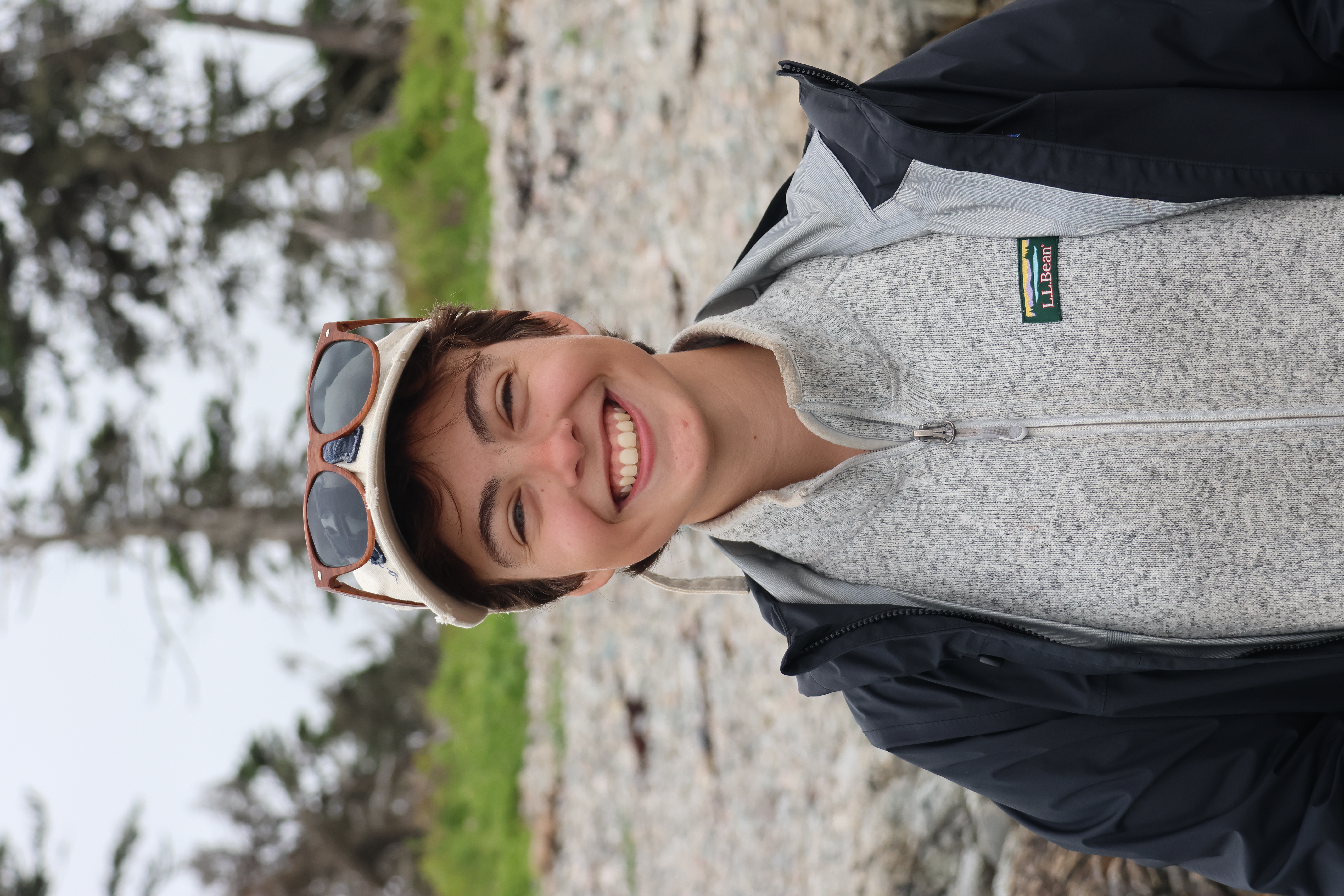
Catherine Benavides
Class of: 2027
Fellowship Focus: The role of size and color in Bombus sandersoni learning abilities
Major(s): Biology
Learning and memory enable animals to forage efficiently for variable resources in shifting environments. Floral traits, such as color and scent, can be associated with varying levels of pollinator reward. Workers of social bee species, who forage within these complex settings and depend on cognitive abilities to succeed in the acquisition of nectar and pollen, vary in size owing to differential received larval nutrition. As brain size scales allometrically with body size in Bombus spp., larger bees may outperform smaller bees in reward-associated choice trials due to increased cognitive ability. This gap in ability may expand when assigned a more difficult task. Using wild-caught Bombus sandersoni from the Bowdoin Scientific Station at Kent Island, NB, Canada, we utilized Free-Moving Proboscis Extension Response (FMPER) reward-associated choice trials with four different color-pairings that varied in the degree of chromatic contrasts between the stimuli. All rewarded colors were learned by tested bees, but bees showed strong preferences for yellow stimuli in their respective color pairings. Body size did not affect the success of bees in choice trials across any color pairing. We propose that B. sandersoni learning ability is not influenced by body size, which may reduce negative impacts on colony health from developmental differences. The consistent color bias for yellow may have emerged from the floral species available on Kent Island.